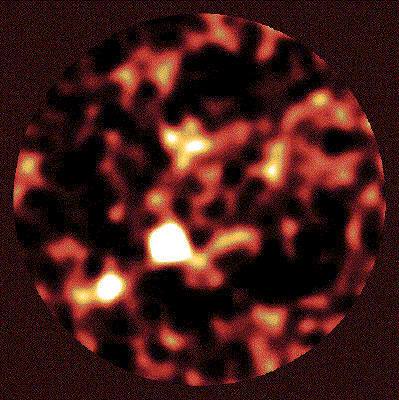 High redshift star formation in the
Hubble Deep Field revealed by a submillimetre-wavelength survey
High redshift star formation in the
Hubble Deep Field revealed by a submillimetre-wavelength survey
 High redshift star formation in the
Hubble Deep Field revealed by a submillimetre-wavelength survey
High redshift star formation in the
Hubble Deep Field revealed by a submillimetre-wavelength survey
In the local Universe, most galaxies are dominated by stars, with less than ten per cent of their visible mass in the form of gas. Determining when most of these stars formed is one of the central issues of observational cosmology. Optical and ultraviolet observations of high-redshift galaxies (particularly those in the Hubble Deep Field) have been interpreted as indicating that the peak of star formation occurred between redshifts of 1 and 1.5. But it is known that star formation takes place in dense clouds, and is often hidden at optical wavelengths because of extinction by dust in the clouds.
In the July 1998 issue of Nature (Volume 394, page 241), a team of researchers, including Dr. Walter Gear from MSSL, reports a deep submillimetre-wavelength survey of the Hubble Deep Field; these wavelengths trace directly the emission from dust that has been warmed by massive star-formation activity. The combined radiation of the five most significant detections accounts for 30-50 per cent of the previously unresolved background emission in this area. Four of these sources appear to be galaxies with redshifts between 2 and 4, which, assuming these objects have properties comparable to local dust-enshrouded starburst galaxies, implies a star-formation rate during that period about a factor of five higher than that inferred from the optical and ultraviolet observations.
The figure shows an image of the Hubble Deep Field taken at 850 microns using SCUBA, a new camera on the James Clerk Maxwell Telescope in Hawaii, The image has a radius of 100 arcseconds and the centre lies at an RA of 12h 36min 51.2s and a Declination of +62degrees 12arcmin 62.5s. The five strongest sources appear white, while other regions of significant emission are yellow.
More information about this exciting new discovery may be found on the web
pages of the Joint Astronomy Centre, Hawaii in this special
press release.